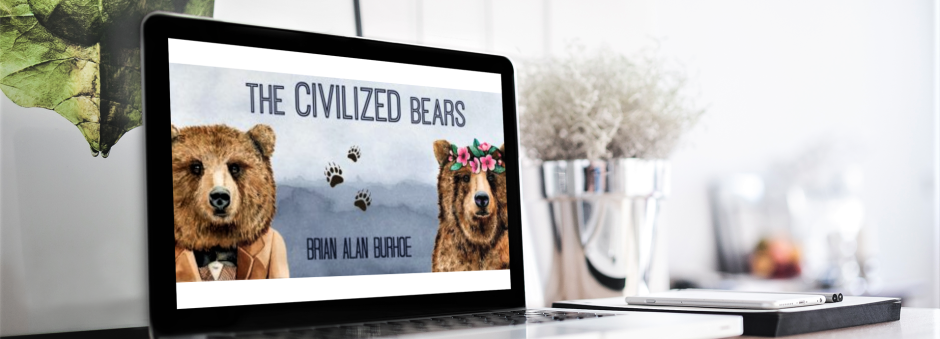Wildlife Trade…
Illegal Wildlife Trade From Monkeys to Endangered Rhinos. Why Compassion Must Win Over Cruelty
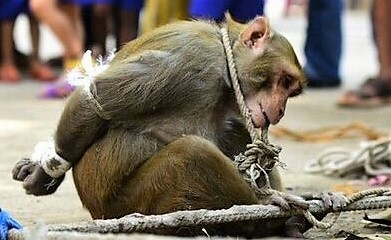
Today’s trade in living wild animals and the parts of slaughtered wildlife has got to be a dark example of Humankind at our most inhuman. It’s just awful.
Cruelty may be part of Nature. But the message of Love and Compassion has also been part of Human nature from the beginning of our Homo Sapiens’ (“Wise Man”) adventure. Back, back to our civilized roots, when we first took wild wolf cubs into our homes, some of us have believed we can be a better part of Creation. And told stories about it.
Francis of Assisi, inspired by the greatest written message of Human history, the Sermon on the Mount, preached about it. He said, “If you have men who will exclude any of God’s creatures from the shelter of compassion and pity, you will have men who will deal likewise with their fellow men.”
And some of the best of us, our sisters, our brothers, are stepping up to do something about it.
One of the oldest trades in wildlife has been of our closest primate relatives: chimps and monkeys as “companion animals.” Today, a number of primate species face extinction because of the pet trade.
The story of just about every primate “companion” is the same. They are captured and taken from their mothers as babies. Transported across the world to pet stores. Purchased by well-meaning humans. Then they grow older, bigger and need more interaction…
The various juvenile chimpanzees who played Tarzan’s Cheetah in movies and television soon became big strong adults and ended up forgotten in cages.
Most actors who portrayed Tarzan, like Ron Ely, accepted the “bites, scratches, sprains and battle scars as part of the territory.” Although actor Mike Henry filed a lawsuit after a chimp named Dinky had “lashed out at me and ripped my jaw open. It took twenty stitches to put my face back together. I was in a monkey-fever delirium for three days…” Mike recovered. Dinky was “destroyed.” [1]
Approximately 60% of the animals at Primarily Primates, a non-profit sanctuary in Bexar County, Texas, are discarded pets captured by the Illegal Wildlife Trade.
“Typically the animal starts to bite and become aggressive. Or picks up a nervous habit, like self-harming or feverishly pacing in the cage, or screaming. Non-human primates are most often abandoned by their owners between the ages of two and eight (depending on the species). After they have started maturing. And sometimes after their owners have had their teeth removed in an effort to restrict their assertive personalities.” [2]
But there is hope. With “illegal wildlife trade being one of the most serious threats to biodiversity,” the International Fund for Animal Welfare (IFAW) is taking action. It has become one of a number of wildlife and wilderness advocates taking on the war against this heart-rending criminal activity. [3]
Just some of the recent animals being saved from the Illegal Trade are:
1. PATAGONIAN PUMAS. Argentine Pumas, cousins to our North American cougar, are dropping in numbers in the Argentinian wilderness.
Early in the morning on August 23, 2017, IFAW, along with The Wild Animal Sanctuary (TWAS) and Forest Animal Rescue (FAR) welcomed two Patagonian Pumas at Miami International Airport. Their arrival signifies a two year effort to ensure the cats receive quality lifetime care in a true sanctuary.
In 2015, a zoo in Rawson, Argentina closed due to lack of funding and public pressure. Many animals were kept behind metal bars in barren cages, including the two pumas.
Meredith Whitney, IFAW’s Wildlife Rescue Program Officer, explained:
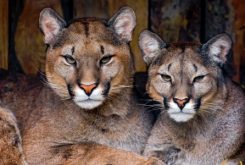 “We are excited at the opportunity to bring these pumas to Forest Animal Rescue. We are committed to ensuring that wildlife everywhere has the best chance possible to live out their lives as wild as possible given their circumstances.
“We are excited at the opportunity to bring these pumas to Forest Animal Rescue. We are committed to ensuring that wildlife everywhere has the best chance possible to live out their lives as wild as possible given their circumstances.
“Given the age and history of these cats, that means lifetime care in a true sanctuary. One that doesn’t buy, sell or breed animals. Our success today highlights the importance our partnerships.
IFAW works with experts throughout the global animal welfare community to ensure captive wildlife is provided every opportunity to live in peace and comfort.”
“Lethal sampling of whales.”
2. MINKE WHALES. A report from the Expert Panel appointed by the International Whaling Commission’s (IWC) Scientific Committee concluded that Japan’s so-called ‘scientific’ whaling program (“lethal sampling of whales”) was not justified. The announcement was published just three days after the Japanese whaling fleet returned to port. It had taken its full quota of 333 Minke Whales as part of its Southern Ocean ‘NEWREP-A’ whaling program.
“The bottom line is that another panel of scientific experts again found that Japan had not shown that the proposed kill of whales would yield any scientific benefits. If Japan continues to pursue its whaling agenda in the face of such overwhelming opposition, anti-whaling governments may need to bring international law to bear on Japan once more,” said Matthew Collis. Collis is Acting Director of International Environmental Agreements at the International Fund for Animal Welfare (IFAW).
“The grisly auction.”
3. SOUTH AFRICAN RHINOS. Experts stated that South Africa’s first ever legal auction of rhinoceros horn enriched a favoured few. But really it just speeded up the road to extinction for one of the world’s most endangered species. The grisly auction took place on Monday, August 21.
“John Hume is South Africa’s biggest private rhino breeder, who owns about 1,500 rhinoceros. Hume said the profits from the sale of the horn will help him better protect his rhino populations. But the fact that this auction is being so vigorously marketed to the countries that have the highest demand for rhino horn calls into question Hume’s motive. That motive in IFAW’s opinion is “driven by profit and profit alone with no conservation benefit,” explained Dr Joseph Okori. Dr Okori is a world expert on rhino conservation. And Director for Southern Africa of the International Fund for Animal Welfare.
“Poachers for the pet trade.”
4. BARBARY MACAQUES. “IFAW unveils key partnership with Morocco to tackle illegal wildlife trade.”
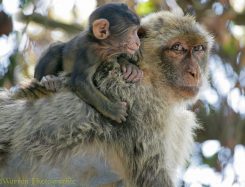 In the last three decades, the total populations of Barbary Macaques (Macaca sylvanus) in Morocco and Algeria, have dwindled from around 23,000 to 6,500. The Macaques are also known as Barbary Apes,
In the last three decades, the total populations of Barbary Macaques (Macaca sylvanus) in Morocco and Algeria, have dwindled from around 23,000 to 6,500. The Macaques are also known as Barbary Apes,
The decrease is due to the destruction of their natural habitat, the cedar forest, and the capture of baby macaques by poachers for the pet trade.
Home of many remarkable species, including these notable endangered Macaques, Morocco is stepping up its efforts to protect its stunning natural habitats and rich wildlife diversity. In Morocco wildlife crime often has a striking impact upon natural resources, cultural heritage and even security in many countries and regions of the world.
With illegal wildlife trade being one of the most serious threats to biodiversity, the International Fund for Animal Welfare and the Moroccan government’s High Commission for Water, Forests, and Combating Desertification (HCEFLCD) are announcing a partnership to strengthen the protection of wildlife and habitats.
“This month’s agreement between IFAW and the HCEFLCD is an opportunity that will allow new initiatives to strengthen the fight against poaching. And dismantle wildlife trafficking routes. And enhance the rescue and rehabilitation of wild confiscated animals, notably under the framework of the Born to be Wild project.”
“Giraffes have been dying off silently.”
5. AFRICAN GIRAFFES. In the last 30 years, giraffes have suffered a devastating population decline of almost 40%. Wildlife groups are seeking to save the species from a silent extinction.
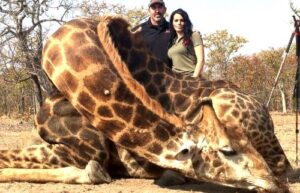 A legal petition has been filed by the Center for Biological Diversity, Humane Society International. Joined by The Humane Society of the United States, International Fund for Animal Welfare and Natural Resources Defense Council, seeking “Endangered” status for the Giraffe.
A legal petition has been filed by the Center for Biological Diversity, Humane Society International. Joined by The Humane Society of the United States, International Fund for Animal Welfare and Natural Resources Defense Council, seeking “Endangered” status for the Giraffe.
Facing mounting threats from habitat loss, being hunted for their meat, and the international trade in bone carvings and trophies, Africa’s giraffe population has plunged almost 40% in the past 30 years. And now stands at just over 97,000 individuals.
“Giraffes have been dying off silently for decades. We have to act quickly before they disappear forever,” explained Tanya Sanerib, a senior attorney at the Center for Biological Diversity. “There are now fewer giraffes than elephants in Africa. It’s time for the United States to step up and protect these extraordinary creatures.”
STOP THE ILLEGAL TRADE!
“Live Free, Mon Ami!” – Brian Alan Burhoe
Do You Agree with this Wildlife Post?
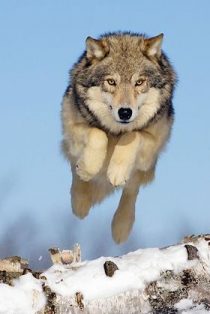 IF SO, YOU MIGHT WANT TO READ WOLFBLOOD — MY MOST POPULAR ANIMAL STORY:
IF SO, YOU MIGHT WANT TO READ WOLFBLOOD — MY MOST POPULAR ANIMAL STORY:
“I JUST READ WOLFBLOOD AGAIN FOR GOOD MEASURE. ONE FOR ANY WOLF LOVER. ENJOYED IT BUT WISH IT WAS A FULL LENGTH NOVEL.” – Gina Chronowicz @ginachron
“GREAT SHORT STORY! DOES REMIND ME OF CALL OF THE WILD, WHITE FANG…” – Evelyn @evelyn_m_k
A heartfelt and thrilling tale in the Jack London Tradition of a lone Gray Wolf and it’s search for its place in the Great Northwoods. FREE TO READ ==> WOLFBLOOD: A Wild Wolf, A Half-Wild Husky & A Wily Old Trapper
“My reason for not getting any more apes is that my thoughts on apes have changed over the years. I really think it’s unfair for apes to be made available to trainers anymore. Would you believe that? I’m including myself, even though I love them very much.” Carmine “Buddy” Mennella, Hollywood animal trainer of chimp J Fred Muggs.
Illegal Wildlife Trade From Monkeys to Endangered Rhinos.
[1] From “Monkeying Around On The Sets,” Chapter I of THE GREAT SHOW BUSINESS ANIMALS by David Rothel, A S Barnes Co, 1980. Great book! Highly recommended.
[2] https://primarilyprimates.org/inside-the-exotic-pet-trade/
[3] About IFAW (International Fund for Animal Welfare):
“Founded in 1969, IFAW rescues and protects animals around the world. With projects in more than 40 countries, IFAW rescues individual animals, works to prevent cruelty to animals. And advocates for the protection of wildlife and habitats. For more information, visit www.ifaw.org. Follow us on Facebook, Instagram, or Twitter at @action4ifaw.”
Illegal Wildlife Trade From Monkeys to Endangered Rhinos.
Source: Civilized Bears, International Fund for Animal Welfare and PRNewswire
